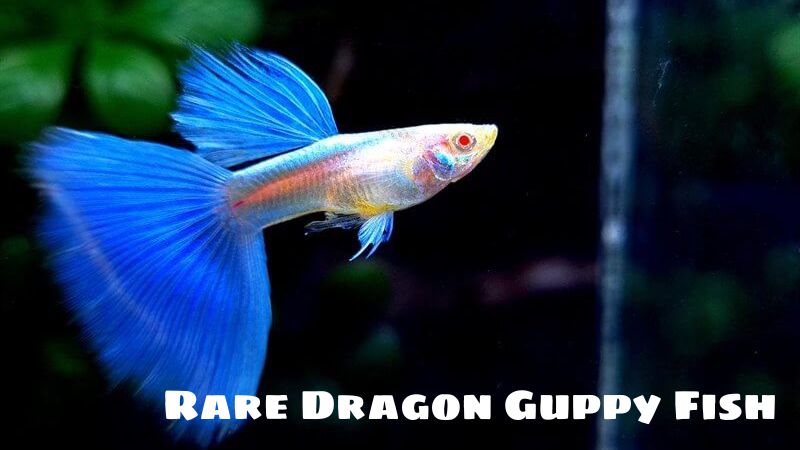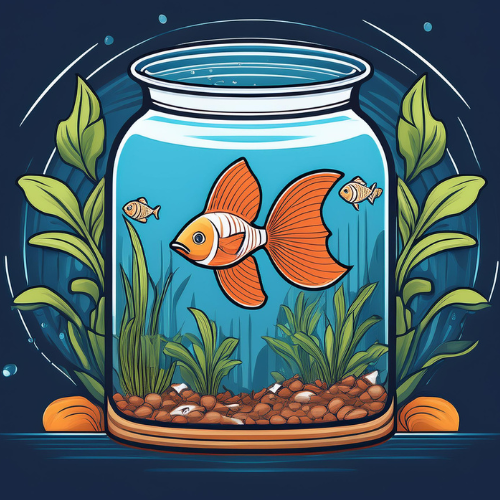Adopt Fish
Rare Dragon Guppy Fish: Unique Beauty And Value
The rare dragon guppy fish, also known as the rare dragon guppy fish, is one of the most unique and charming aquarium fish breeds. With vibrant colors and intricate patterns, they stand out thanks to their exceptional beauty and complex breeding process.
These fish not only attract the eye but also deeply impress collectors and aquarium lovers thanks to their rarity and value. So let’s explore more deeply with Fishtankfables about this rare Dragon Guppy!
Characteristics of Dragon Guppies
Appearance
Color: Dragon guppies, also known as Guppy Dragon, stand out with their characteristic and rich color combinations. These fish often have bright and diverse colors such as red, orange, yellow, blue, and green. This combination of colors creates a dazzling beauty, with sharp stripes, spots or patterns on the fish’s body. These colors and patterns not only create appeal but also make dragon guppies a popular choice in aquariums.
Shape: Dragon guppies have a slim and slender body, helping them move flexibly in the water. Their caudal fins are exceptionally long and can be shaped like dragon wings, creating a beautiful effect when the fish swims. The dorsal and pelvic fins are also well developed, creating balance and enhancing the beauty of the fish. The combination of the elegant body and long tail fin creates a very impressive overall shape.
Other Outstanding Features: Dragon guppies’ scales often reflect light, giving them a sparkling and attractive appearance. Some dragon guppies also have special patterns, such as lattice patterns or light spots, which further accentuate their beauty.
Size
Average Size: Dragon guppies have an average size that is smaller than many other guppies. Usually, adult dragon guppies reach a size of 3 to 5 cm, with females being slightly larger than males. Their compact size makes dragon guppies an ideal choice for small aquariums or terrariums.
Character
Gentle Personality: Dragon guppies are famous for their gentle and pleasant personality. They are usually not aggressive towards other fish and can live peacefully in a diverse aquarium. Their easygoing personalities make dragon guppies one of the most popular aquarium fish, suitable for both beginner and experienced fish keepers.
With their eye-catching appearance and sociable personality, dragon guppies not only beautify the aquarium but also create a peaceful and enjoyable living environment for other fish.

Reasons Why Dragon Guppies Are Considered Rare
Breeding Process
The Breeding Process is Complex and Meticulous:
Dragon guppies are considered rare mainly because their breeding process is very complex and meticulous. To create a dragon guppy with unique colors and patterns, breeders must perform crosses between different guppy breeds, which requires an in-depth understanding of genetics.
Learning and keen observational abilities. This breeding process often requires many generations and careful selection to achieve desirable characteristics such as vibrant colors and unique patterns.
Low Success Rate:
The success rate in breeding dragon guppies is usually quite low. The combination of genes between individuals may not always produce the desired results, and many individuals do not meet the requirements in terms of appearance or health. This makes the production of dragon guppies difficult and time-consuming, contributing to their rarity.
Quantity
The Number of Dragon Guppies on the Market is Very Limited:
Due to the complicated breeding process and low success rate, the number of dragon guppies on the market is often very limited. These factors, along with high demand from aquarists and collectors, have made dragon guppies difficult to find and often available in fewer numbers than other types of guppies.
Value
High Price Compared to Common Guppies:
Due to their rarity and complicated breeding process, the price of dragon guppies is often much higher than that of regular guppies. This high cost reflects the effort and resources expended in the breeding process as well as their scarcity in the market.
Dragon guppies have distinctive colors and patterns that can command very high values, making them valuable items in the aquarium hobby.
With an elaborate breeding process, limited quantity and high price, dragon guppies have affirmed their position as one of the rarest and most popular fish species in the aquarium world.
Rare Dragon Guppy Fish
Blue Dragon Guppy
Outstanding Features:
The blue dragon guppy stands out with its bright and vibrant blue color on its body. This blue can range from light blue to deep blue, often accompanied by dark striped or spotted patterns, creating a sparkling effect as the fish swims. The long tail fin and other fins are also often blue or combined with other shades of blue, creating a striking and attractive beauty.
Source:
Blue dragon guppies are bred from basic guppy breeds with the intervention of blue genes from other guppy species. This breeding process requires careful selection to ensure the brightness and durability of the green color, while maintaining the health and growth of the fish.
Red Dragon Guppy
Outstanding Features:
The red dragon guppy stands out with its bright and vibrant red color on its entire body. Red can range from orange-red to dark red, often with white or yellow accents creating an attractive contrast. The fish’s fins are also often solid red or combined with other shades of red, contributing to a dramatic appearance.
Source:
Red dragon guppies were developed through cross-breeding guppies with outstanding red color characteristics. Like blue dragon guppies, red dragon guppies are selectively selected over many generations to achieve the brightness of their red color and maintain superior genetic characteristics.
Other Varieties
Golden Dragon Guppy:
Golden dragon guppies are bright yellow or orange-yellow, often with darker patterns or spots. This variety stands out for its brightness and golden brilliance, creating a striking highlight in the aquarium.
Black Dragon Guppy:
Black dragon guppies are primarily jet black in color, often with silver or white accents. The deep black color and light reflection from the fins create an elegant and noble beauty.
Orange Dragon Guppy:
Orange dragon guppies are bright orange or dark orange, often with brighter orange patterns or stripes. This variety offers outstanding beauty and warmth, often a favorite in small and medium aquariums.
Raising and Caring for Dragon Guppies
Fish Tank
Suitable Tank Size:
Dragon guppies, with their relatively small adult size (about 3-5 cm), can live well in small tanks, but the optimal tank size is usually 30 liters or more. A large enough tank not only gives fish a comfortable swimming space, but also helps maintain the stability of the water environment, reducing water quality problems and stress for fish.
Tank Design:
To create an ideal living environment for dragon guppies, the aquarium should be decorated with live rocks, aquatic plants, and other decorative elements. Live rock and aquatic plants not only provide shelter and swimming areas for fish, but also help improve water quality by absorbing excess nutrients.
The lighting in the tank should be adjusted to simulate the natural environment, usually gentle and stable light for about 8-12 hours a day, helping aquatic plants grow well and creating conditions for fish to feel comfortable. roof.
Water
Water Quality:
To keep dragon guppies healthy, the water quality in the tank is very important. Water pH should be maintained between 6.8-7.8, with water temperature between 24°C and 28°C. Water hardness should be at a moderate level, not too high or too low. Using measuring kits to monitor and adjust these factors regularly is essential to ensure the water environment is suitable for the needs of the fish.
Regular Water Change:
Regular water changes are an important part of dragon guppy care. It is recommended to change 20% to 30% of the water in the tank every week to remove waste and impurities. Water changes help maintain stable water quality and reduce the risk of fish disease.
Food
Suitable Foods:
Dragon guppies are omnivorous and can consume a variety of foods, including specialized guppy pellets, fresh foods such as artemia, and frozen foods such as daphnia. Foods should be chosen to provide adequate nutrients, including protein, vitamins, and minerals.
Food Amount and Feeding Frequency:
Dragon guppies should be fed 2-3 times per day, with enough food for them to eat for about 2-3 minutes at a time. Providing too much food can lead to excessive waste and water pollution, while feeding too little can affect the fish’s health. Ensure that the food provided is of good quality and not spoiled.
Reproduction
Reproductive Process:
Dragon guppies breed quite easily in captivity. They are oviparous fish, which means the female gives birth to fully developed young instead of laying eggs. Female fish are usually pregnant for about 4-6 weeks before giving birth. When preparing to give birth, female fish may have a larger belly and appear heavy.
To increase the survival rate of fry, the female should be separated from the main tank and give birth in a separate tank.
Caring for Baby Fish:
After the fry are born, they should be given small foods appropriate for their size, such as fishmeal or probiotic food. Young fish need to be protected from other fish and kept in a stable and clean environment.
Make sure the tank has enough space and the necessary elements for the fry to grow healthily. Monitor juvenile fish growth and adjust diet and water quality to support optimal growth.
Caring for dragon guppies requires attention to detail and patience, but with proper care, dragon guppies can grow healthy and beautify your aquarium.
Conclusion
Rare dragon guppy fish, with their unique colors and patterns, not only beautify the aquarium but are also a valuable part of any aquarium collection. Their rarity comes not only from the complex breeding process but also from their limited quantity and high price. Outstanding characteristics and meticulous care have made dragon guppies an attractive and valuable choice for aquarium fish lovers.

